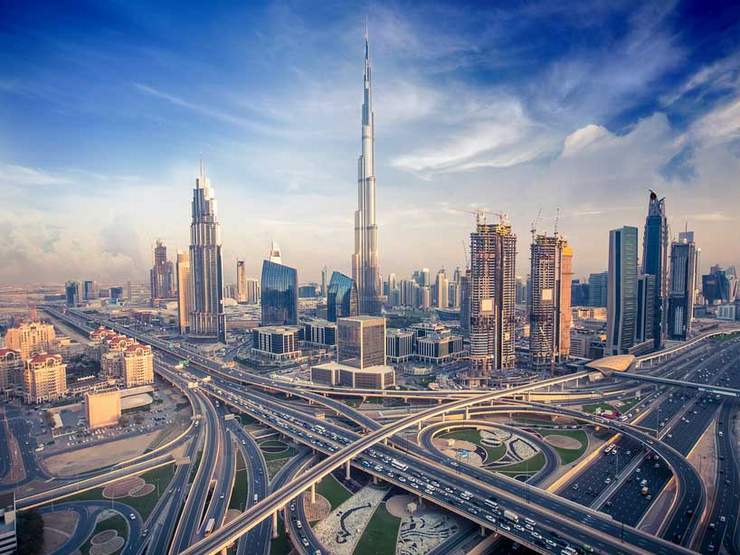Dubai's modern architecture
Modern architecture has flourished in the Gulf, and the speed at which Dubai has grown has resulted in one of the most spectacular building booms of modern times – at one point in the mid-noughties it was estimated that, astonishingly, a quarter of all the world’s construction cranes could be found in Dubai alone.
Building site
The exploding real-estate market, ready supplies of apparently limitless finance and widespread availability of large plots of unused land all conspired to turn Dubai into an enormous building site, further heated by a general absence of the sort of zoning rules, planning permissions and conservation issues which so often haunt major new constructions in the West.
The wide open desert spaces of Dubai thus provided a kind of tabula rasa on which architects could doodle – and then see their doodles take shape with lightning speed. The results are inevitably mixed. Some of the modern architecture in the Gulf is spectacularly ugly, some is notable as much for its sheer quirkiness as for its ultimate success, although the region also boasts a clutch of undoubted modernist masterpieces, as well as some superb urban architectural ensembles, such as the teetering high-rises of Sheikh Zayed Road.
Dubai's best buildings
Almost all the region’s finest modernist icons can be found in Dubai, a veritable encyclopaedia of contemporary design ranging from the good through to the bad, the mad and the downright ugly. Some of Dubai’s most memorable buildings are decidedly quirky in inspiration: the strange Dusit Thani hotel, for example, inspired by the traditional Thai wai greeting, with hands placed together in welcome (although it actually looks more like an enormous upside-down tuning fork), or the landmark Etisalat Building, topped by what looks like a vast golf ball (a design now copied in other Etisalat buildings in Dubai, Abu Dhabi and elsewhere).
Many of the city’s finest buildings pay oblique homage to the emirate’s former maritime traditions, with various sail-shaped architectural motifs, exemplified by the celebrated clubhouse of the Dubai Creek Golf Club (1993), a fascinating sculptural creation whose instantly recognisable outline (like a kind of Dubai remake of the Sydney Opera House) is inspired by the triangular shapes of the traditional lateen sail. The sail motif is invoked again in the superb National Bank of Dubai (designed by Carlos Ott, 1998), its towering Creekside facade comprising a single enormous “sail” surrounded by highly reflective aluminium cladding, mirroring boats on the waters below. Best of all, however, is the superlative Burj al Arab (Tom Wright, 1999), whose land-facing side provides Dubai with its largest and most magnificent architectural sail, memorably illuminated at night (and juxtaposed against the rollercoaster shape of the wonderful Jumeirah Beach Hotel next door, inspired by the shape of a breaking wave).
High-rise Dubai
Dubai is now the tallest city in the world, outstripping traditional skyscraper hotspots like New York and Hong Kong. Pride of place goes to the jaw-dropping Burj Khalifa, far and away the world’s tallest man-made structure, while other landmarks include the twin Emirates Towers (formerly the tallest buildings in the Middle East) and the soaring, pencil-thin Rose Rayhaan hotel (the tallest hotel in the world).
Discover more...
• Explore Sheikh Zayed Road and its array of futuristic buildings
Read more from the travel guide to United Arab Emirates




